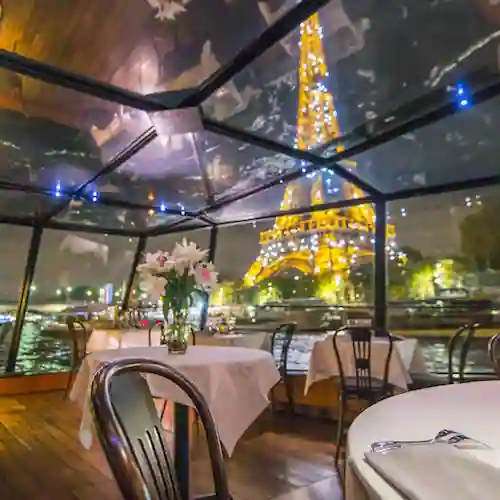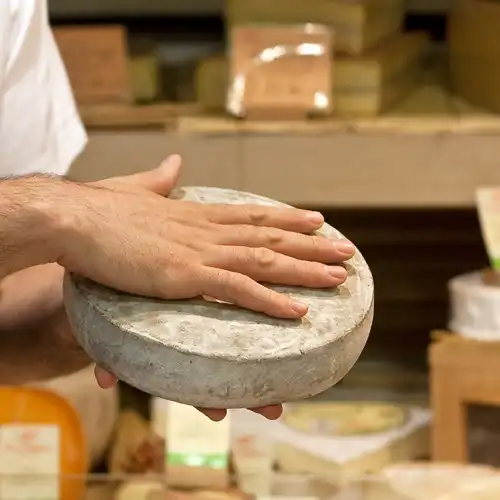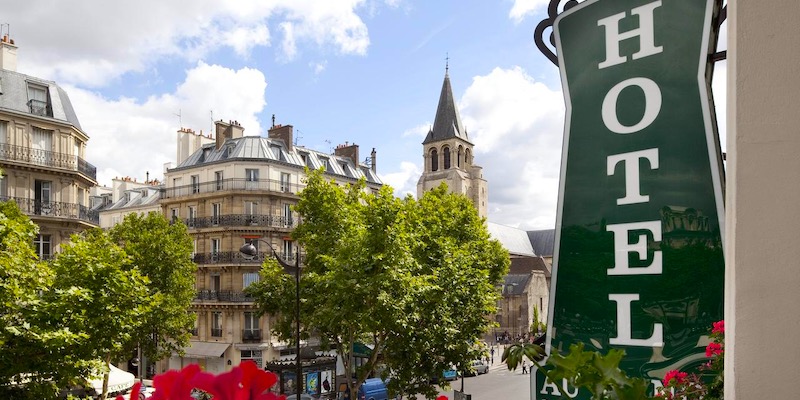17 Essential France Attractions Outside Paris
Exploring France's attractions outside Paris takes you to a world of natural beauty, historic wonders, and culinary delights. We've found that getting out of Paris is terrifically rewarding as we experience the depth and diversity of the country's culture. From Normandy's poignant history and dramatic coastlines to the Loire Valley's fairy-tale castles, each region boasts its own unique character.
Visiting the French countryside is important to us any time we journey to Paris. It's like a trip into the soul of the country and why the French call it France Profonde. Here there are magnificent cathedrals; there, the lavender fields of Provence; and there is the joie de vivre of Bordeaux. With every new destination we've had unforgettable experiences and created indelible memories. Come with us on a journey through some of the best France attractions outside Paris, places that that balance culture, history, and breathtaking beauty.
![]()
Discover What's On When You're Here...
• January... |
• February... |
• March... |
• April... |
• May... |
• June... |
• July... |
• August... |
• September... |
• October... |
• November... |
• December... |
Discover What's On When You're Here
• January...
|
• February... |
• March... |
|---|---|---|
• April... |
• May... |
• June... |
• July... |
• August... |
• September... |
• October... |
• November... |
• December... |
Normandy & The D-Day Beaches
 Visit magical & mysterious Mont Saint-Michel in Normandy
Visit magical & mysterious Mont Saint-Michel in Normandy
Normandy, with its sweeping green landscapes, medieval villages, and windswept Atlantic coast, is steeped in both history and beauty. The D-Day landing beaches, a UNESCO World Heritage Site, are among the most solemn and powerful France attractions outside Paris. This is where history feels close enough to touch; a place that witnessed the beginning of the end of World War II. Nearby, the American Cemetery at Colleville-sur-Mer is a haunting tribute to the lives lost.
The best way to visit the D-Day Beaches is on a all-inclusive, guided day trip from Paris. Visiting these shores gives you the chance to reflect on the courage of the allied troops who landed here during World War II, creating the beginning of the end of that conflict.
Honfleur
An hour west from the D-Day beaches, the picturesque town of Honfleur showcases a different side of Normandy. Its medieval architecture and cobblestone streets feel like stepping into another era, where the harbor, lined with pastel-colored houses, inspired artists like Claude Monet (our favorite) and Georges-Pierre Seurat. Take time to wander the town, enjoy fresh seafood, and admire the reflection of boats bobbing in the water.
Magnificent Mont Saint-Michel
Mont Saint-Michel is a the breathtaking medieval abbey perched atop a rocky outcrop that becomes an island at high tide. Your visit to Normandy would not be complete without experiencing this unique place. This gravity-defying abbey rising out of the sea is a classic entry on any list of France attractions outside Paris.
Explore the abbey's soaring architecture, walk the winding streets of the village below, and take in sweeping views of the bay. Mont Saint-Michel is not just a highlight of Normandy — it's one of France's most iconic landmarks.
Claude Monet's Gardens at Giverny
Closer to Paris, but still in Normandy, is the lovely medieval town of Giverny, famed for the house and gardens of Impressionist master Claude Monet, including his memorable water lily pond, the subject of dozens of his later paintings.
The former residence of Monet has been restored to its early 20th-century glory, when the master worked and painted there. Giverny is an easy day trip from Paris, available almost every day in the warmer months. While you're there, be sure to visit the local art galleries and the small museum dedicated to the Impressionists. If the name Monet conjures dreamy water lilies and pastel skies, you'll want to put Giverny high on your list of France attractions outside Paris.
Tour the Greatest Normandy Attractions
Visit the D-Day Beaches in Normandy
The Loire Valley
 Loire Valley chateau at sunset
Loire Valley chateau at sunset
The Loire Valley, known as the "Valley of 1,000 Castles", and within driving distance from Paris, is a region of exceptional beauty and historical significance. Its famous Renaissance chateaux, magnificent gardens, extensive vineyards, and picturesque villages make it among the finest France attractions outside Paris and an ideal place to visit if you are interested in history, inspiration, and the beautiful countryside.
You can't help but marvel at Château de Chambord, a World Heritage Site and one of the best places to visit in the Loire. Its architectural splendor, including the celebrated double-helix staircase attributed to Leonardo da Vinci, is a testament to Renaissance ingenuity. The chateau's sprawling gardens invite leisurely exploration, whether by foot, bicycle, or even horse-drawn carriage when the Loire Valley weather permits.
Another gem of the Loire Valley is Amboise, one of the medieval towns nestled along the banks of the Loire River. It's home to Château d'Amboise, where French kings once resided, and to Clos Lucé, the final home of Leonardo da Vinci, which now houses exhibits celebrating his life and work. The medieval streets of this charming town step down from the chateau, hugging the hillside.
For wine enthusiasts, the Loire Valley offers a chance to delve into French viticulture. The region is celebrated for its crisp whites like Sancerre and Pouilly-Fumé, as well as a sparkling wine known as Crémant, surpassed only by Champagne in annual production and quality.
A chateaux & wine-tasting day trip to the Loire Valley is a chance to savor the art of French winemaking in its purest form while marveling at the high Renaissance art exhibited by chateaux.
The Timeless Grandeur of Versailles
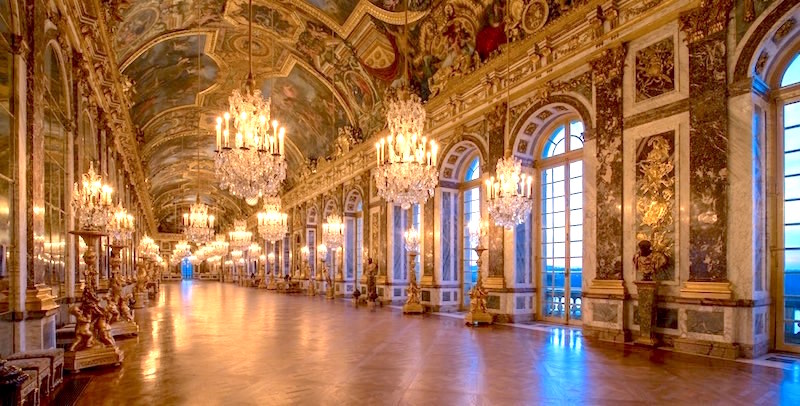 The magnificent Hall of Mirrors at Versailles
The magnificent Hall of Mirrors at Versailles
The Château de Versailles is the pinnacle of France's royal history, transformed from a humble hunting lodge into an opulent symbol of absolute monarchy under Louis XIV, the Sun King. Inside, the palace dazzles with its ornate design, and you can't help but be impressed by the Hall of Mirrors — a 73-meter-long gallery where golden chandeliers and arched windows reflect endless rows of mirrors, creating a breathtaking display of light and grandeur.
The splendor continues beyond the chateau itself. Designed by André Le Nôtre, the expansive gardens of Versailles stretch across 800 hectares, the pinnacle of French formal landscaping. Geometric pathways, manicured hedges, and ornate fountains dazzled the royal court and still captivate visitors today. Highlights include the Latona and Neptune Fountains, where there are water musical performances during summer's Grandes Eaux Musicales.
Just outside the main palace, the Grand Trianon and Petit Trianon served as tranquil retreats for doomed queen Marie Antoinette, offering her a quieter contrast to the frantic court life.
Located just thirty minutes from Paris, Versailles is an easy and rewarding day trip. To fully appreciate the chateau's art, history, and design, a guided tour is a must, one that includes transportation from and return to Paris. These tours include skip-the-line access, allowing you to avoid spending time waiting in a queue and, overall, providing a more relaxing and more memorable experience.
Strolling through the palaces and gardens ofVersailles is not just a visit to a historic site — it's an immersion into the splendor of a bygone era, a place where France's past comes to life. This has to be on anyone's list of the impressive France attractions outside Paris.
The French Riviera
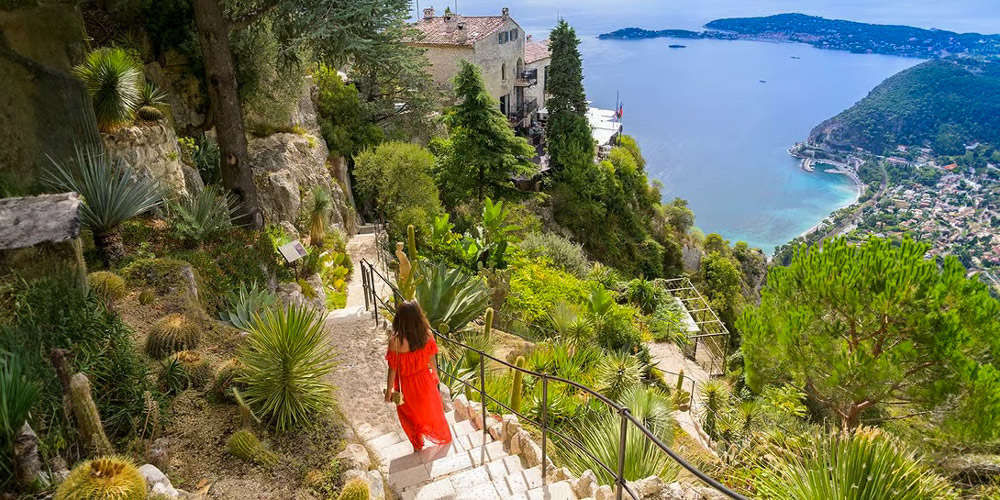 View along part of the Côte d'Azur
View along part of the Côte d'Azur
The Côte d'Azur, or French Riviera, is a slice of Mediterranean paradise that still takes our breath away. Think glamour, Mediterranean lifestyle, and artistic inspiration. This stunning coastline stretches from the French Italian border west to Saint-Tropez, with a near-impossible mix of picturesque towns, turquoise waters, and cultural must-sees. Each destination has its own appeal, making the French Riviera a destination for any traveler seeking to experience its timeless allure.
Cannes
While Cannes is best known for its glittering film festival, the city's charm extends beyond the red carpet. La Croisette, the iconic promenade, epitomizes that Riviera elegance we were talking about, with luxury boutiques, historic hotels, and sun-drenched beaches. Stroll past designer shops and then settle into a beachfront cafe for an afternoon of people watching. Le Suquet, the Old Town, offers a more intimate side of Cannes, with narrow streets winding up to the Church of Our Lady of Esperance, where panoramic views await.
Beaulieu-sur-Mer
Beaulieu-sur-Mer, aptly named "beautiful place by the sea", is an oasis of tranquility. Its serene harbor, lined with sailboats and fishing vessels, exudes a timeless charm. The Villa Kérylos, a meticulous recreation of an ancient Greek mansion, provides an intriguing glimpse into classical art and architecture. Wander through its elegant halls and gardens, or simply take in the Mediterranean views that stretch endlessly to the horizon.
![]()
 View of the Mediterranean from the Grand-Hôtel du Cap-Ferrat
View of the Mediterranean from the Grand-Hôtel du Cap-Ferrat
Saint-Jean-Cap-Ferrat
Nestled on a peninsula that juts into the sea, Saint-Jean-Cap-Ferrat is an enclave of understated luxury. Walking trails wind along its rugged coastline, offering breathtaking views at every turn. The grand Villa Ephrussi de Rothschild is a highlight, with opulent interiors and manicured gardens, all inspired by a mash-up of global styles — from Japanese Zen to Florentine grandeur. Saint-Jean-Cap-Ferrat also boasts hidden coves and crystal-clear waters, perfect for a secluded swim.
Antibes
Antibes blends history, art, and contemporary charm. Its 16th-century ramparts encircle a lively town center, where cobblestone streets lead to bustling markets and cafés. The Picasso Museum, housed in the Chateau Grimaldi, celebrates the artist's connection to the area, displaying works that reflect the region's vibrant colors. Antibes' marina, Port Vauban, is home to luxury yachts, contrasting the old-world charm with modern indulgence.
Nice
We are captivated by Nice. This Mediterranean city near the Italian border offers a blend of history, culture, and natural beauty. We love exploring the cobbled streets of the old town, taking in the panoramic views from Castle Hill, and discovering the art and culture of the city. Honestly, Nice is one of those places that has something for every traveler.
Spend time exploring the Old Town markets, relax on the pebbly beaches, and savor the vibrant atmosphere of this gem on the Mediterranean Sea. Plan your trip to Nice and discover the magic of the French Riviera!
The Best of the French Riviera
Provence
 The main square in central Aix-en-Provence, photo by Mark Craft
The main square in central Aix-en-Provence, photo by Mark Craft
Provence feels like a second home to us and is on the top of our list of the best France attractions outside Paris. This region of vineyards, fragrant lavender fields, and ancient hill-top villages, is to us the best example of the idyllic French countryside we all imagine. Steeped in history and culture, Provence offers a serene contrast to Paris, being filled with cobbled towns, the vineyards of the Cote du Rhone, and vibrant village markets. The natural beauty is unsurpassed, making Provence truly a treasure of Southern France.
Avignon
The walled city of Avignon transports us back to the Middle Ages when it served as the home of the Catholic popes and was one of the most important cities in western Europe. The Palais des Papes, the largest Gothic palace in the world, endures as a symbol of that illustrious past. When we wander through its grand halls and hidden chapels, we can easily imagine the lives of the popes and cardinals who once ruled from this impressive structure.
Nearby is the famed Pont d'Avignon, a partially intact medieval bridge that gives the visitor a glimpse of that era's engineering while providing stunning views of the Rhone River.
Aix-en-Provence
Known as the City of a Thousand Fountains, Aix-en-Provence is another Provençal town that oozes charm. A haven for art and culture lovers, Aix was the birthplace of Impressionist artist Paul Cézanne, and you can explore the city's artistic legacy at Atelier Cézanne.
The town's markets burst with local produce, lavender products, and handmade crafts, giving you the chance to bring home a little bit of the flavor of the region.
Marseille
One of France's oldest settlements (founded by Greek colonists of the Classical Era) Marseille is a vibrant port city that blends ancient history with modern energy. The Vieux-Port in the city center remains a hub of activity, where you can still find fishermen selling their daily catch and where locals gather for mid-day meals. Above it all, the Basilique Notre-Dame de la Garde offers sweeping views of the city and the Mediterranean beyond. Marseille's multicultural food scene, with specialties like bouillabaisse, reflects its rich maritime heritage and global influences.
The Best of Provence
Alsace: A Tapestry of History and Culture
 Vineyards and villages of Alsace
Vineyards and villages of Alsace
Alsace, nestled in eastern France, is a place where cultures mingle and history comes alive. Known for enchanting half-timbered houses, cobblestone streets, and celebrated wines, Alsace offers up a near-perfect mix of scenic beauty and cultural heritage. Its cities, villages, and landscapes make it a must-see destination outside Paris. Let's look at some of the best places to visit in Alsace.
Strasbourg
Strasbourg, the capital of Alsace, is known for Grande Île, a UNESCO World Heritage Site. The Gothic masterpiece of the Strasbourg Cathedral, with its intricate facade and astronomical clock, towers over the city's medieval heart. Nearby, the canals and half-timbered houses of La Petite France create a picturesque setting that feels frozen in time.
More than anything, Strasbourg epitomizes Christmas. The markets, decorations, and seasonal activities make it the virtual center of the European holiday celebrations. If you like Christmas, you're going to love Strasbourg.
Colmar
The fairy-tale town of Colmar is almost a fantasy Alsatian village and one the the region's best places to visit. You will be enchanted by colorful half-timbered houses and flower-lined canals, especially in the district known as Little Venice. The Unterlinden Museum is worth a visit, if only to view the famed Isenheim Altarpiece. Beyond the museums and markets, Colmar's storybook ambiance makes every stroll an experience.
Alsace Wine Route
Alsace's wine route winds through these villages, offering tastings of celebrated varietals like Riesling and Gewürztraminer. Family-owned wineries welcome visitors to sample their craft and share generations-old winemaking traditions. The easiest (and most fun) way to get to the most traditional wineries is by signing up for a guided wine tour.
The Château du Haut-Konigsbourg is a crowning highlight of the region. This hilltop fortress, meticulously restored, offers panoramic views and a glimpse into medieval life. Alsace's accessibility from Paris by direct high-speed train makes it an easy addition to your France travel itinerary. The medieval streets, the wines, and the depth of its history, makes Alsace a destination worth exploring.
France Attractions Outside Paris – Final Thoughts
While Paris captivates with its charm, the true essence of France unfolds beyond its city limits. From the sun-kissed vineyards of Bordeaux to the historic shores of Normandy, France attractions outside Paris offer a diverse tapestry of experiences that enrich any journey.
Venturing into these regions reveals the country's multifaceted beauty — be it the lavender fields of Provence, the majestic chateaux of the Loire Valley, or the culinary delights of Lyon. Embracing France attractions outside Paris not only diversifies your travel itinerary but also provides a deeper connection to the nation's rich heritage and culture.
Continue Your Paris Adventure
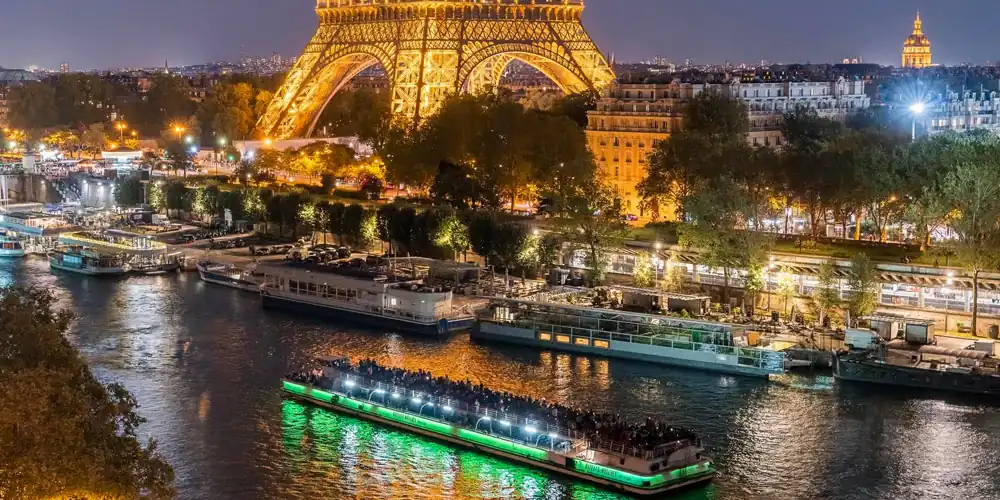 A dinner cruise on the Seine River
A dinner cruise on the Seine River
Meanwhile, back in Paris the wonders never cease. Here are a few ways to enhance your visit:
🎨 Skip-the-Line Louvre Masterpiece Tour →
🗼 VIP Tours of the Eiffel Tower →
🚢 Toast Paris on a Seine River Dinner Cruise →
👑 A Royal Day at Versailles →
⚜️ City of Paris Website: News & Happenings →
![]()
|
From Paris to Provence, Burgundy to Bordeaux, find hotel deals with current sale prices. Save up to 20% in cities, villages, beach towns, and storybook countryside escapes. |
|
Discover today's sale prices on hotel rooms in every village & city in France. Save up to 20%. Find hotels in Paris, Burgundy, Provence, the Loire Valley, Normandy, and everywhere else! |




